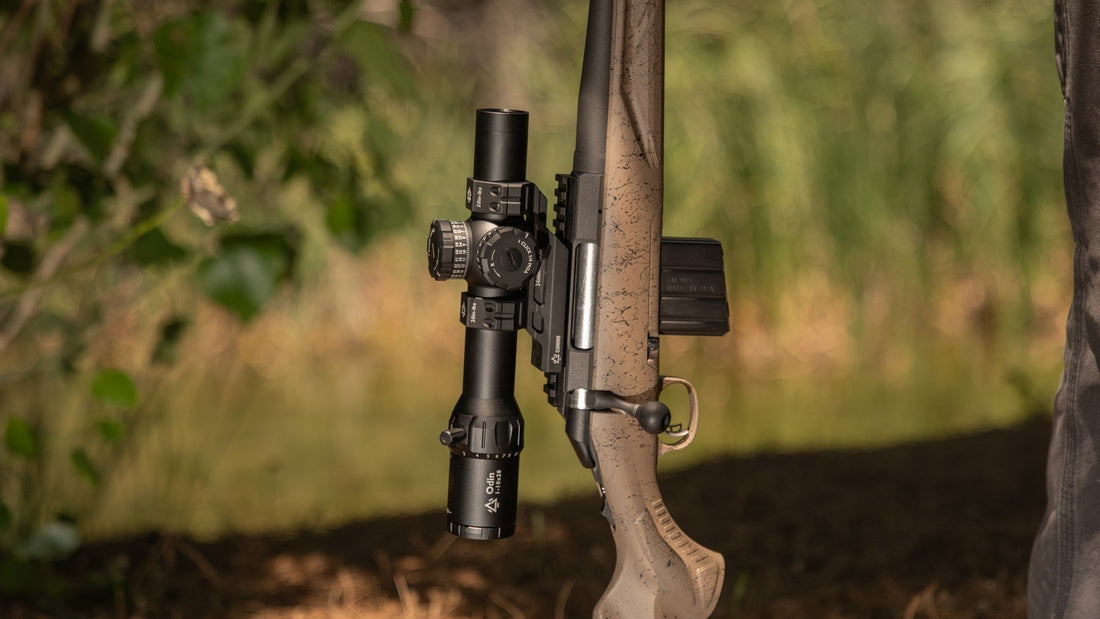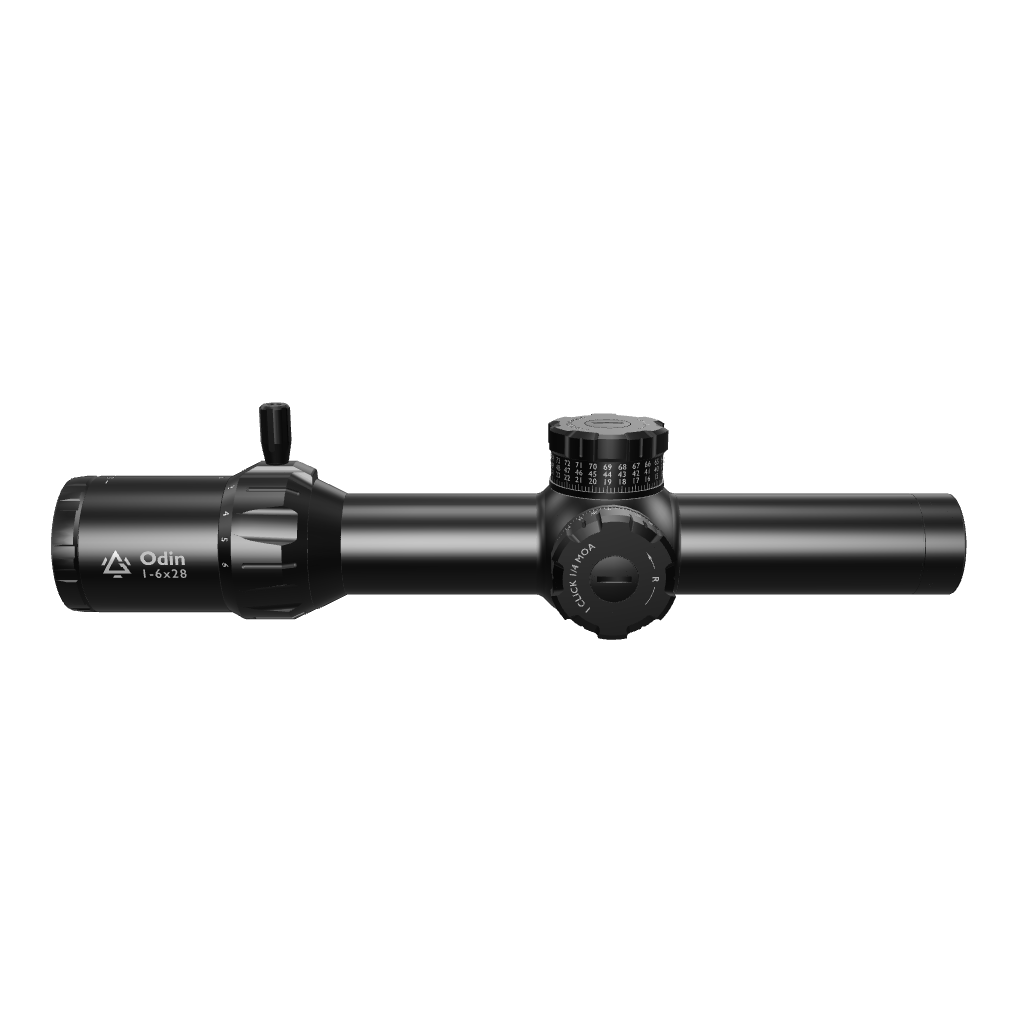Beginner's Guide to Rifle Optic Types: Understanding LPVO, Standard, Scout, and Prism Optics
I imagine that the first questions new shooters face are about equipment: Which riflescope is best for beginners? Which optic is best for hunting? And which optic is best for competition? There are many different types of rifle optics, with terms like LPVO, reconnaissance optic, and prism scopes, making it easy to get confused. A closer look reveals that each optic has different uses, design philosophies, and advantages. This guide will detail four common rifle optic types, helping you understand their meaning, design philosophies, most common usage scenarios, and which one best suits your shooting needs.
What is a standard rifle scope?
Imagine the telescope you use every day. A telescope makes distant objects appear larger and clearer.
A standard rifle scope is like a “telescope” mounted on a gun, but it is not used simply to view scenery; rather, it helps the shooter see distant targets clearly when aiming. For example, a deer that appears very small at 300 meters with the naked eye can be magnified 3 to 9 times using a 3-9x40 scope, making it easier to aim as if you were closing the distance. A standard rifle scope is not a specific model but a type of scope with certain classic features, such as a 3-9x variable magnification, a second focal plane (SFP) reticle, and a 1-inch or 30mm tube. It replaces iron sights by providing magnified aiming through reticles, enabling precise targeting.
Features
- Magnification: Typically fixed magnification (e.g., 4x) or variable magnification (e.g., 3-9x, 4-12x).
- Objective lens diameter: Common sizes include 40mm and 50mm; larger objective lenses allow more light to enter.
- Reticle: Typically crosshairs or graduated reticles, used for precise aiming and ballistic correction.
- Mounting position: Generally mounted above the receiver, near the shooter's eye.
- Dimensions and weight: Longer and larger than LPVO or Prism scopes.
Common Uses of Standard Scope?
Standard rifle scopes are commonly used for medium- to long-range shooting. During hunting season, hunters use them to aim at deer or other game at distances of two or three hundred meters or even farther. At shooting ranges, shooters rely on them for precise paper or steel target shooting. In some long-range shooting competitions and tactical missions, they also help shooters identify and lock onto distant targets. Overall, it is more suitable for scenarios where stable accuracy is required at distances ranging from 200 to 600 yards or even further.
What does LPVO stand for?
Imagine you're playing a magnifying glass game: when you hold the magnifying glass up to your eyes, you can enlarge some letters, but the range is limited; without the magnifying glass, you can see the entire page clearly but the details are blurry. The LPVO (Low Power Variable Optic) is like a tool that combines both of these methods. At 1x magnification, it offers a field of view as wide as a standard sight, almost as if there were no magnification, making it ideal for quick targeting at close range. When you adjust it to 6x or 8x magnification, it can enlarge distant targets for clearer visibility. This feature allows shooters to seamlessly switch between close-range and long-range shooting using a single sight.

Features
- Magnification: Commonly 1-4x, 1-6x, or 1-8x, with some models reaching 1-10x.
- Objective Lens Diameter: Typically 24mm–30mm, with a compact size.
- Reticle: Often features complex reticles with ballistic compensation or illumination functions.
- Mounting Position: Mounted above the rifle receiver, close to the shooter's eye.
- Dimensions and Weight: Larger than red dot sights but shorter than traditional long-tube standard sights.
Common Uses of LPVO Optics
LPVO scopes are commonly used in scenarios that require both close-range and medium-range capabilities. At 1x magnification, it can aim quickly like a red dot sight, making it ideal for close-range shooting and dynamic competitions; when magnified to 6x or 8x, it also helps shooters achieve more precise aiming within a 200–400-yard range. As a result, LPVO is highly popular in tactical rifles (such as the AR-15), 3-Gun shooting competitions, and defensive shooting scenarios that require flexibility across varying distances.
What is a scout optic?
Imagine you are using binoculars to look at a distant target, but instead of holding them up to your eyes, you hold them a little further away. Although the image becomes smaller, both of your eyes remain open, making it easier to be aware of your surroundings. The Scout optic (reconnaissance scope/front-mounted optic) is such a sight: it is mounted in front of the rifle's receiver, farther from the shooter's eyes, providing longer "eye relief," allowing the shooter to quickly raise the rifle and aim while maintaining good situational awareness. Compared to traditional standard sights, its ability to keep both eyes open offers more possibilities for hunting and tactical applications.
Features
- Magnification: Typically low-power fixed magnification or a small range of variable magnification, such as 2x–4x.
- Objective Lens Diameter: Typically 28mm–32mm, with a compact overall design.
- Reticle: Commonly a simple crosshair or thick-line sight, facilitating quick aiming.
- Mounting Position: Mounted forward on the rifle receiver, near the barrel.
- Dimensions and Weight: Lightweight construction, with an overall weight lighter than standard scopes.
Common Uses of Scout Scopes optics
Scout Scopes are most commonly used in outdoor hunting and shooting environments that require high mobility. It allows shooters to keep both eyes open while aiming, enabling them to quickly locate targets while also monitoring their surroundings at all times. When facing fast-moving prey or situations requiring quick reactions, the Scout Scope offers greater flexibility than traditional long-tube scopes. Additionally, its longer eye relief enhances safety when using large-caliber, high-recoil rifles.
What is a prism scope
The Prism Scope is particularly unique, as it bears no resemblance to a telescope. Imagine using a prism to refract light in a classroom—though small, it can refract light with remarkable clarity. The Prism Scope operates on a similar optical principle, using prisms to refract light rather than relying on traditional lenses to form an image. This design makes the scope more compact and lightweight while still providing magnification and a clear aiming image. For shooters, it is like a “small yet precise” telescope, simple in function but highly practical.
Features
- Magnification: Typically fixed magnification, such as 3x, 4x, or 5x.
- Objective lens diameter: Relatively small, commonly ranging from 24mm to 30mm.
- Reticle: Uses etched reticles on glass, usable even without power; some models support illumination.
- Mounting position: Mounted above the rifle receiver, similar to the position of a red dot sight.
- Dimensions and weight: Compact overall, lighter than standard scopes, and slightly larger than red dot sights.
Common Uses of Prism Scopes
Prism Scopes are commonly used for short to medium-range shooting at distances of 100–300 yards. They offer magnification functionality beyond red dot sights and are more compact than standard scopes, making them ideal for tactical rifles, AR platforms, and environments requiring quick aiming with moderate precision. For beginners, the Prism Scope is also a user-friendly option: its fixed magnification makes operation simpler, eliminating the need for frequent adjustments. Even if the battery runs out, the etched reticle remains functional, ensuring reliability. Additionally, the etched reticle is engraved on the glass, maintaining clarity and sharpness, and the etched lines ensure a usable aiming point even without illumination.
Standard vs. LPVO vs. Scout vs. Prism
To help you see the differences at a glance, here’s a quick comparison of the four scope types:
|
Scope Type |
Magnification Range |
Objective Lens Diameter |
Reticle Type |
Mounting Position |
Average Weight |
|
Standard Scope |
Fixed 4x or variable 3-9x / 4-12x |
40–50mm |
Crosshair or BDC/marked reticles |
On top of the receiver, close to the eye |
400–600g |
|
LPVO |
1-4x, 1-6x, 1-8x, some 1-10x |
24–30mm |
BDC, illuminated options |
On top of the receiver, close to the eye |
450–650g |
|
Scout Scope |
2x–4x (low fixed or small variable) |
28–32mm |
Simple crosshair or thick reticle |
Forward-mounted, ahead of the receiver |
300–450g |
|
Prism Scope |
Fixed 3x–5x |
24–30mm |
Etched reticle, some illuminated |
On top of the receiver, similar to red dot |
250–400g |
After learning about the four common types of rifle optics, you may ask: Which one should beginners start with?
For most beginners, the LPVO is the most suitable first optical sight, as it balances close-range rapid fire and medium-range precision shooting. The standard scope remains a classic choice for long-range hunting, while the Scout and Prism scopes are subsequent options tailored to individual needs.







